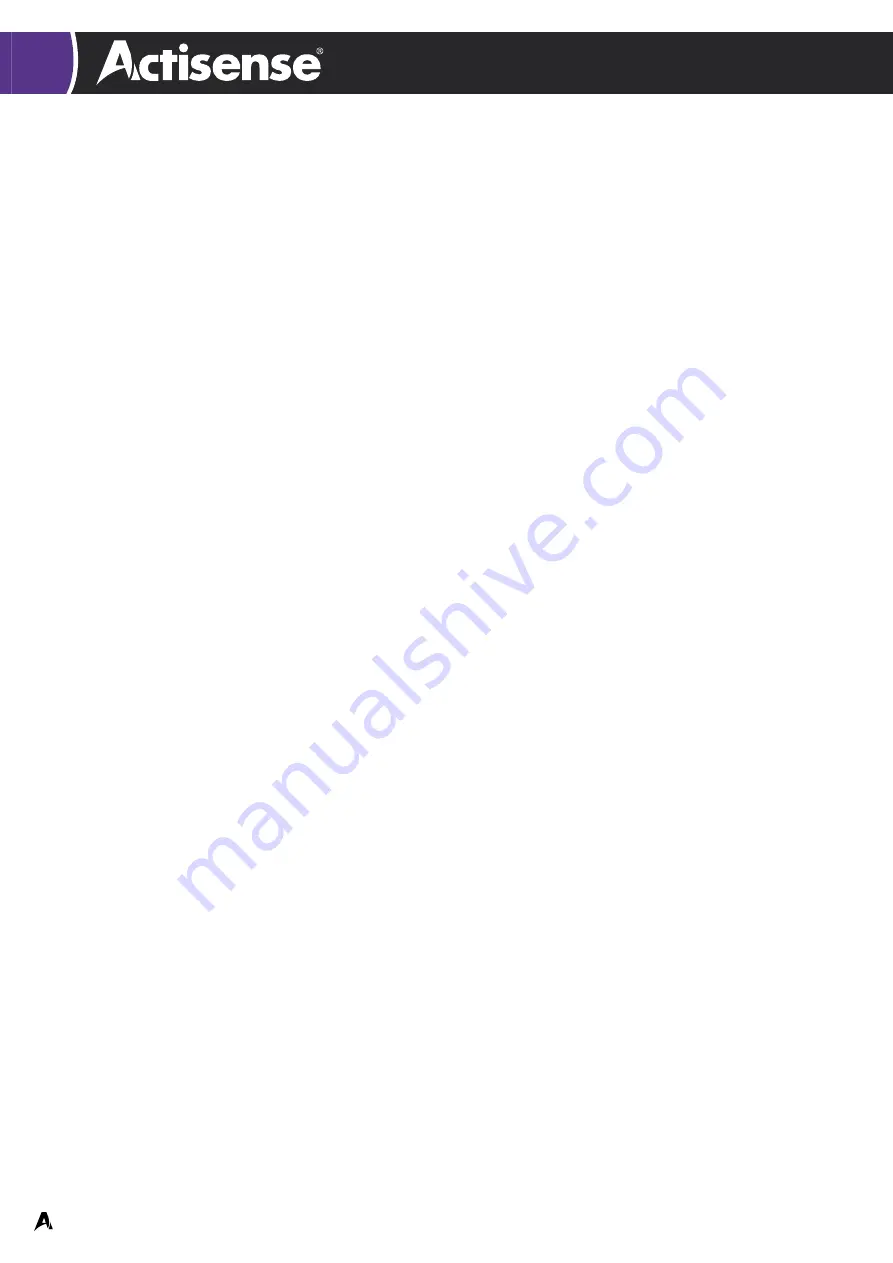
© 2015 Active Research Limited
Page 6
NMEA 0183 interfacing
The basics
NMEA 0183 data is transmitted from a “data source” such as a GPS, depth sounder, gyro compass etc. These data
sending devices are called “Talkers”.
Equipment receiving this information such as a chart-plotter, radar or NMEA display is called a “Listener”.
Only one “Talker” can be connected to an NMEA 0183 “Listener” at any one time. Two or more “Talkers” cannot be
connected together as they will ‘talk over each other’, resulting in corruption of the NMEA 0183 data and potentially
permanent damage to one or both “Talkers”.
Actisense produces a full range of products to solve all NMEA 0183 interfacing requirements.
Please visit the Actisense website for full details on these and other Actisense interfacing products (NMEA Multiplexers,
NMEA Buffers, and NMEA Autoswitches), Depth sounders and Sonar products.
The NMEA signals
The NMEA 0183 system v2.0 and later uses a “differential” signalling scheme, whereby two wires are used to transmit
the data. These connections will be labelled as either NMEA “A” and “B” or NMEA “+” and “-” respectively,
depending on the instrument and manufacturer. When connecting between different manufacturers, there can be
some confusion, but it is simple and easy to remember: NMEA “A” connects to NMEA “+” and NMEA “B” connects to
NMEA “-“.
The different NMEA standards
The NMEA 0183 specification has slowly evolved over the 30 years since its first inception, so connecting one device to
another is not always a straightforward matter. The early versions of NMEA 0183 (before v2.0, as detailed above), used
RS232 signalling (one “NMEA” data line ‘Tx’ or ‘Out’ and ground as the other data line). This connection method is
referred to as “Single-ended” instead of the “Differential” method used by NMEA 0183 v2.0 (and later) devices.
The data format is largely the same between both systems, with newer versions adding new sentences, new fields
to existing sentences, and removing older (redundant) sentences from the specification. The situation is further
complicated as many manufacturers still use the old non-isolated “Single-ended” method of connection because it is
cheaper to implement (than the mandatory since 1990, opto-isolated “Differential” method).
The Actisense USG-2 solves all these NMEA 0183 connection issues by having inputs and outputs that are totally
compliant with both systems and which float independently from each ground at all times.
By following the simple connection diagrams in this manual, the user can be safe in the knowledge that as long as the
connection is secure, the data will go through as intended and no damage will result.
Please refer to the Connecting NMEA 0183 devices and Connecting Personal Computer RS232 port sections for
example of these connection methods.






























